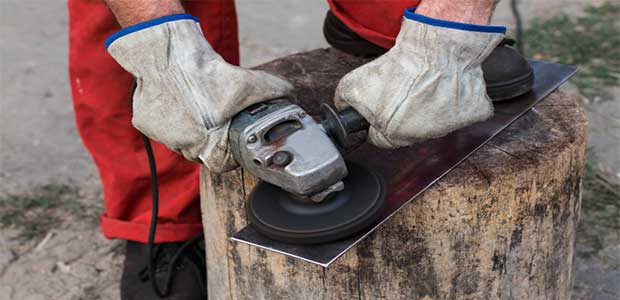
Getting a Grip on Hand-Impact Injuries
It’s time for action on hand-impact injuries. Employers and workers alike need to use their heads and start protecting their hands.
- By Jill A. Clements
- Sep 06, 2019
It’s time for action on hand-impact injuries. Employers and workers alike need to use their heads and start protecting their hands. And the Occupational Health & Safety Administration (OSHA) should reference the American National Standard for Performance and Classification for Impact Resistant Hand Protection (ANSI/ISEA 138-2019) in federal workplace safety regulations.
More than 42% of nonfatal occupational injuries to upper extremities in 2017 involving days away from work in private industry involved hands. Of the 286,150 nonfatal occupational injuries to upper extremities in 2017 involving days away from work in private industry, 121,860 involved hands, the U.S. Bureau of Labor Statistics reported.
Offshore oil and gas, construction, mining, manufacturing, warehousing and transport industries are particularly susceptible to hand-impact injuries. The International Association of Drilling Contractors (IADC) 2018 Summary of Occupational Incidents (published in June 2019) revealed that 29.47% of total industry lost-time incidents by body part involved fingers (20.26%) and hands/wrists (9.21%), and that 41.41% of total industry recordable incidents by body part involved fingers (31.12%) and hands/wrists (10.29%).
Moreover, hand injuries are expensive, costing from $540 to $26,000, according to the National Safety Council — with certain types of damage being far more. And because injuries to the hand are the second-most common type of workplace injury, they have a significant impact on workers compensation claims. The National Council on Compensation Insurance, Inc., found that “the preliminary 2018 average indemnity accident year claim severity increased by 3% relative to the corresponding 2017 value. Medical lost-time claim severity increased by 1%.”
Hand-impact injuries can be especially difficult to treat and recover from, particularly if any of a hand’s 27 bones are crushed instead of cleanly broken. In addition to bone injuries, hand-impact accidents can also damage muscles, tendons and ligaments. Since healthy hand function is so essential to many tasks, the stakes are high for both employees and employers.
The problem is not only tragic and expensive, it’s very preventable. According to the Occupational Safety & Health Administration (OSHA), 70.9 percent of hand and arm injuries could have been prevented with personal protective equipment, specifically safety gloves. Ironically, however, 70% of workers don’t wear hand protection. And of those who do, 30% don’t wear the right kind of glove for the task.
The biggest injury risks have been dorsal or back-of-hand injuries such as bone breakage and fractures, as well as bruising and finger pinching. Up until this year, though, there was no standardized approach for protecting against those injuries, although standards and guidance were in place for certain types of hand injuries such as those caused by cuts, punctures and chemical exposure.
The need for standards was all the more urgent, given the wide availability of glove designs with varying performance claims, and employers’ reliance on trial and error to figure out which gloves worked best in protecting against various hand-impact risk exposures.
That’s why the International Safety Equipment Association (ISEA) worked with industry experts to create a standard designed for industrial gloves to protect workers. The new standard — ANSI/ISEA 138-2019, American National Standard for Performance and Classification for Impact Resistant Hand Protection — built upon the widely used ANSI/ISEA 105-2016, American National Standard for Hand Protection Classification.
The U.S. and Europe have long had standards for industrial gloves that protect hands from cuts, punctures, abrasion and chemical exposure, but ANSI/ISEA 138 is the first standard to address the risk from impact injuries in North America. ANSI/ISEA 138 defines an agreed test method, includes three defined performance levels, specifies a pictogram mark for each of the levels for compliant gloves, and requires products be tested in a laboratory with a certificate of accreditation meeting the requirements of ISO/IEC 17025:2017 (General requirements for the competence of testing and calibration laboratories).
ISEA’s new industrial-glove standard is a vital step toward improved hand safety, and will help employers and workers make better-informed decisions about glove selection. Copies of ANSI/ISEA 105-2016 and ANSI/ISEA 138-2019 can be purchased online from ISEA and from ANSI’s licensed resellers.
However, the standard is only one part of the answer. ISEA also launched a #SafeHands awareness and education campaign this year, in partnership with the National Waste & Recycling Association and the Voluntary Protection Programs Participants' Association, to help workers and employers grasp the importance of using hand protection. Our special SafeHandsAtWork.org webpage includes an informative hand safety infographic and helpful tips.
While I hate to say accidents are inevitable, to some extent they are. Training and awareness campaigns are helpful, but they don’t entirely eliminate workplace distractions, employee fatigue or other factors that — despite everyone’s best intentions — contribute to safety lapses.
That’s why hand protection is vital for a safe workplace. The goal is prevention, but the vital safety step — based on the reality that the goal won’t be met 100% of the time — involves providing and using proper hand protection.